This time last year, if you’d have told us what the world was in store for in 2016, we would have banded together to personally build you a spaceship and launch you off to the deepest recesses of space. From a bevy of celebrity deaths to the rise of nationalism in Europe to the election of a demagogue in America, the world is a very different place now than it was a year ago. In these dark times, it’s easy to dismiss stories as frivolous or inconsequential. But in truth, storytelling has never been more important than it is right now. Comics have the ability to educate and elevate discourse. The narratives we tell now will shape the future for better or worse. That’s why it’s important to celebrate the best of us right now.
These are the books that enlightened us, brought us together, or if nothing else, gave us a moment of fantastic escape. These are The Beat’s Best Comics of 2016.
Zachary Clemente
 Internal Affairs III
Internal Affairs III
Cartoonist: Patrick Crotty (Peow Studios)
There’s something truly fun about this book but I can’t tell you one reason why; it’s my take-away from the whole experience, including talking to Patrick about it at SPX (I still need to transcribe that interview, jeez). IA III (there is no I or II) takes you through the rise of Onion, an unpaid intern embarking on a techno-action adventure against his “employer” – it has a zany plot that works effortlessly thanks to Crotty’s incredible emotive beats and character interactions. The world of IA III feels incredibly tactile and thought-out though we only get a small slice and that’s because the cast feels so complete. Something else to love about IA III is the production and how those choices tie into the rest of the work. Heavily influenced by manga – the case with much of PEOW’s lineup – the constant ramping up of the plot, the framing of action scenes, and even the cover and spine design is reminiscent of tankōbon; inside and out. Definitely check out this book and others published by PEOW, you can’t go wrong.
 Lady of the Shard
Lady of the Shard
Cartoonist: gigi d.g. (Self published)
I’ve been staring at my computer screen for over and hour trying to formulate the way to introduce this. I’ve also re-read the comic twice. It’s not long but it has a resounding impact to say the least. Gigi’s work, most notably Cucumber Quest, has always been my go-to for charming characters and a superb color palette and nothing’s changed when it comes to Lady of the Shard except it’s completely different. It’s often charming, but just as often arresting and uncomfortable. The characters are very recognizable but almost serve as ciphers – allowing the reader to map onto them and interpret as they do. The color palette is…breathtaking, especially when absent; gigi only wielding 2 or 3 colors at a time on a given page with a clear intent. The sheer existence of this comic, not only for it’s content, but it’s choice of platform and it’s cohesion of it’s artistic and narrative structure is satisfying as someone raised more on webcomics than those in print. Once read, Lady of the Shard is an unforgettable masterpiece. Also it’s literally free to read.
 Fantasy Sports No. 2
Fantasy Sports No. 2
Cartoonist: Sam Bosma (NoBrow)
Magic & sports – what more could you ask for? No, seriously, the Fantasy Sports series is one of the most charming and enjoyable comics around. In a world where a guild of mages maintains magical order, two of their adventurers must battle their way though dangerous situations, but with sports! There’s something immensely refreshing about seeing someone as attentive to action as Bosma channel incredible choreography and framing normally seen on a battlefield or in a duel to a basketball or volleyball court. Additionally, not satisfied with simply creating exhilarating and fantastical athletic romps, Bosma is building towards a realized world, a greater story building around the adventures of Mug and Wiz as they move from court to greens in their next adventure. If you need any more reason, Nobrow’s printing of this book is downright stunning.
Sam Bosma
Guest Contributor
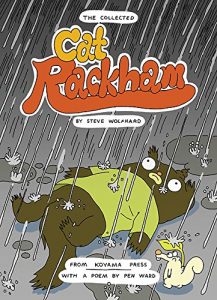
There were a lot of comics I really loved in 2016 (Sophia Foster-Dimino’s Sex Fantasy 7, Kris Mukai’s My Car’s a Spaceship and My Spaceship’s A Boy, Jimmy Giegerich’s Death Knight, to name a few), but I might think about the Cat Rackham collection more than any others. I think that makes it my favorite.
Alex Dueben
 Black Dog
Black Dog
Cartoonist: Dave McKean (Dark Horse Originals)
Dave McKean at this stage of his career has demonstrated that he can do just about anything. In this book, equally ambitious as Cages, McKean interrogates the life and work of the British painter Paul Nash, who was forever changed by his experiences during the First World War, through a series of dreams. The oversize volume is a joy to behold and insight and look into Nash and his thinking is amazing. At this stage of his career, McKean is no longer a major figure in comics, the artist/writer/designer/filmmak
 U.S.S. Stevens: The Collected Stories
U.S.S. Stevens: The Collected Stories
Cartoonist: Sam Glanzman (Dover)
Glanzman has long been an artist’s artist and this collection demonstrates why. During WW2, Glanzman served aboard the Stevens and in these stories, most of them 4-6 pages long, he tells stories about the ship and its men during the war. Some stories are quiet, some are character studies, some thoughtful, some violent. Neither anti-war nor romantic, the stories are a master class in how to write and draw short comics, and should be required reading for anyone who wants to work in comics.
 Paracuellos: Volume 1
Paracuellos: Volume 1
Cartoonist: Carlos Gimenez (IDW)
This book by Carlos Gimenez is something of a legend in his native Spain and elsewhere but this year this book was finally published in the US. The story of a child growing up in a state run home in the aftermath of the Spanish Civil War, it begins as the story of one child – Gimenez himself – but becomes something bigger. The story of a generation growing up in a fascist state, run by adults that don’t care whether the children live. This look at childhood in fascist Spain is more than just a great memoir, but an important historical document and one of the powerful and haunting graphic novels I have ever read.
 The Ukrainian and Rusian Notebooks
The Ukrainian and Rusian Notebooks
Cartoonist: Igort (Simon & Shuster)
This book was originally published as two volumes where Igort traveled to the region and tells stories about the people he meets and the stories he overhears as he investigates the 1932 Holodomor, where the Soviet government caused the deaths of millions of Ukrainians, and the more recent murder of a Russian journalist who was critical of Vladimir Putin.
 Paul Up North
Paul Up North
Cartoonist: Michel Rabagliati (Conundrum)
Rabagliati’s series of semi-autobiographical graphic novels about Paul continues with this volume set in 1975-76 and concerns a series of youthful adventures, including his first love. Poetic, insightful and beautifully drawn, the book is a great addition to one of the great ongoing comics series of the 21st century.
 One Hundred Nights of Hero
One Hundred Nights of Hero
Cartoonist: Isabel Greenberg (Little, Brown)
Isabel Greenberg’s debut book was one of the best books of 2014 and her second book is even better. A book about the power of stories and storytelling, it’s a play on 1001 Arabian Nights that takes the story in directions that are both poignant and whimsical. Greenberg’s voice and tone are like no one else’s in comics and she is a wonder.
AJ Frost
 Ghosts
Ghosts
Cartoonist: Raina Telgemeier (Graphix)
A healthy dose of magical realism combined with a touching story of love and mortality makes Raina Telgemeier’s latest a must-read for everyone serious about comics as a medium.
In my review earlier this year of Ghosts, I wrote: “[R]eaders are left with a meaningful, searching graphic novel, one that provokes deep thought afterward. What do the people close to me mean? How will we remember them when/after they pass? How will we keep the flame of their memory alive? There are no easy answers, and every culture has its own. Ghosts constrains its focus by using the Day of the Dead as a mechanism to raise these questions without answering them. And the results are profoundly affecting. Those who have lost loved ones will recognize the emotional impact of the climactic scenes, while those who haven’t can still appreciate their muted poise and dignified air.” I stand by my earlier assessment but would like to add that in the time since I’ve written the review, I’ve gone back to reread the story and am still in awe that such a melancholy work about our mortality could still be so positive about the need for experience all the joys of life. Without a doubt Raina’s latest graphic novel is a tour de force of emotion, wit, and warmth.
 March Book Three
March Book Three
Writers: John Lewis & Andrew Aydin
Artist: Nate Powell
(TopShelf)
As the era of Obama ends and Donald Trump ascends to the presidency, there is going to be a lot of soul-searching from committed activists about what is the best way to protect the rights that were so hard-fought and which, until recently, were sacrosanct as tools of a healthy democracy. The three-part saga of March, which culminated in the captivating Volume 3 this year, is as much a pedagogical tool as it is a moving story about overcoming senseless bigotry. In the hands of co-writer Andrew Aydin and artist Nate Powell, Congressman John Lewis’ life as an activist and advocate becomes immediate and contemporary. At times while reading this one, I could see where America as a whole has made progress, and where we’ve lamentably fallen so far behind. While reading the book, I would have to pause at points because I was getting riled up at the thought of the recent Supreme Court decision gutting key provisions of the Voting Rights Act of 1965. As rendered in the comic, here was John Lewis getting his head split open for standing up for his rights as an American simply registering to vote and here we are now seeing state legislatures all over the nation signing bullshit voter ID laws to keep minorities from voting. It’s disgusting. And we shouldn’t stand for it. But we need perspectives on history to remain ever-fresh in our memories if we are going to combat attacks on our freedoms. That is why March is the one of the essential comics to read this year.
 Glenn Gould: A Life Off Tempo
Glenn Gould: A Life Off Tempo
Cartoonist: Sandrine Revel (NBM Publishing)
How does one absorb sound from a comic? It seems like a complete impossibility, right? Well… right. But that shouldn’t stop you from enjoying the aural nuances that Sandrine Revel plays with in this masterpiece of a biographical comic about one of the twentieth century’s most brilliant interpreters of Bach, Schoenberg, & Beethoven. Glenn Gould was a savant and an interpreter of Bach par excellence. But with any genius who could play complicated chorales and fugues with ease, he was most ill at ease in the company of mere mortals. In a way, Gould was the Bobby Fischer of the clavier (sans the conspiracy theories and anti-Semitism): a practitioner of a precise art without contemporary peer. Its this dichotomy that that makes Revel’s work both inspiring and terrifying. Here we have a man who is so brilliant yet so troubled; a public enigma. Revel’s use of space is akin to Gould’s: long stretches of pages without dialogue balloons, small panels, big panels, full page spreads. It’s a sight to behold and one of the best biographical comics about a musician to come out in 2016.
A clip of Gould’s musical genius for reference (https://www.youtube.com/watch?v=qB76jxBq_gQ)
 Agatha: The Real Life of Agatha Christie
Agatha: The Real Life of Agatha Christie
Writers: Anne Martinetti & Guillaume Lebeau
Artist: Alexandre Franc
(SelfMadeHero)
One of the aspects I love most about the French comics style is that they generally follow a philosophy of not everything having to be symmetrical and perfectly composed. There’s room for squiggly, odd-shaped panels buttressed by lots of white space. They’re quirkily constructed, you might say. Which is why I found this modest little comic about one of mystery literature’s most widely read and admired so charming. Agatha Christie’s literary oeuvre is one of the most beloved, the story of the author herself is just as fascinating and page-turning. Writers Anne Martinetti & Guillaume Lebeau do an excellent job of laying out a series vignettes portraying a writer’s evolution from neophyte, to master, to filled with ennui about her own creations (and life in general). Recommended for people who are familiar with Christie’s work and the lasting allure of the whodunit yarn.
 Superman: American Alien
Superman: American Alien
Writer: Max Landis
Artists: Jock, Jonathan Case, Francis Manapul, Jae Lee, Joëlle Jones, Tommy Lee Edwards, & Nick Dragotta
(DC Comics)
If just for the cover art alone, Max Landis’ Superman: American Alien would be an instant classic. I didn’t discover this collection until several days after this year’s election and there was simply something about that cover image of a diverse set of people, men and women, all colors and shapes, flashing that iconic “S” symbol that filled me with a childlike sense that everything is going to be okay; Superman transcends petty partisan squabbles. (It also helped me psychologically that my dad, who passed away a year ago now, was a huge fan of Superman and would’ve probably enjoyed seeing that cover image). The stories contained in this volume, while nominally another rebooting of the Superman mythos, are more like a collection of self-contained snippets about a Clark Kent in his pre-Man of Steel persona. Landis presents Clark through a hyper-contemporary lens, lending an interesting perspective that works solidly throughout the comic. With seventy-five years of history, it’s difficult to get readers to entertain the notion of why we need yet another origin story for the Man of Steel, but this was a surprisingly emotional work and one that should get serious attention from Superman neophytes and experts alike.
Alexander Jones
This year was a bit tough for me in terms of comics. As a comics reader consuming primarily Big Two material, their wasn’t quite as many individual titles that caught my attention as compared to even last year. Even still, Rebirth has been a tremendous success amounting to stronger comics from DC since the beginning of The New 52. Valiant had a very impressive slate of titles in 2016, with 4001 A.D. being the best event published this year. IDW continues to shepherd the Transformers Universe with intense care & love. Elsewhere, Young Animal while early on in its run is inspiring lots of confidence.
 Wonder Woman “The Lies” & “Year One”
Wonder Woman “The Lies” & “Year One”
Writer: Greg Rucka
Artists: Nicola Scott & Liam Sharp
(DC Comics)
Many superhero comics debuted in 2016, but few books tapped into the singular voice & paranoia of a lead hero like Greg Rucka, Nicola Scott & Liam Sharp’s Wonder Woman. No Rebirth issue of a DC series established tone and direction of a comic quite like Wonder Woman: Rebirth #1. After the solid debut, the series slowed down significantly in pacing and has only now started to explore some of the potential hidden in the debut issue, but the comic’s grounded tone and subdued dialogue has amounted the book to become something greater than the sum of its parts. Many comics in 2016 have accelerated through so much plot that character means little, but the supporting cast in Wonder Woman continue to shine and stay consistent while still teaching the reader new aspects of their character. With a strong, likeable ensemble cast and subdued tone, Wonder Woman shines brightly through the Rebirth line-up.
 Mockingbird
Mockingbird
Writer: Chelsea Cain
Artists: Kate Niemczyk
(Marvel)
Mockingbird has gotten the short side of the stick for years, but all that changed when Bobbi Morse hopped in the driver seat during her first ongoing series. Writer Chelsea Cain and artist Kate Niemczyk slid the most complex characterization of a leading female in a Marvel book in this series. Morse has played second fiddle to Hawkeye’s inconsistent characterization for years and she wants out. With a unique irreverent, sarcastic tone and sense of humor unlike any other protagonist in comics, Cain’s depiction of Morse may never be tapped into ever again, but the eight issues published by Marvel will stand alone as the publisher breaking ground. Mockingbird was loaded with unique characterization and dense puzzle-box plotting that lit up the internet for all the right reasons. This holiday season don’t just read the headlines, read a comic brimming with intriguing, nuanced characterization and lovely art!
Rosie Knight
 Goldie Vance Vol. 1
Goldie Vance Vol. 1
Writer: Hope Larson
Artist: Brittney Williams
(Boom! Box)
Goldie Vance was the hero that 2016 needed and boy am I glad that Hope Larson and Brittney Williams were generous enough to share her with us. GV is a beautifully bright spot in a year so bad it’s not a complete exaggeration to say it’s been almost apocalyptic, Goldie’s pastel hued, endlessly stylish world is a much needed escape from the horrors of ours.
Teen detective comics are definitely a forgotten gem, which with the recent interest in creating art for the YA audience is ripe to be revisited. Larson and Williams do this perfectly, balancing Goldie’s everyday life as a charming, intelligent young black girl with the encroaching mystery that ends up driving the book’s narrative.
An engrossing and addictive tale, I have read this book over and over since its release in April. Every time it leaves me feeling completely fulfilled and wanting nothing more than to join Goldie and her friends in their beautiful, fun and exciting world.
 Dept H Vol 1
Dept H Vol 1
Cartoonist: Matt Kindt
Colorist: Sharlene Kindt
(Dark Horse)
There’s something incredibly immersive about the way Matt Kindt creates comics and Dept H is no different. I’ve never read a book that’s more of its setting than this locked room mystery set six miles underneath the ocean. The impact of Sharlene Kindt’s colours cannot be understated either, as they (along with Matt’s pencils) create something that looks like it shouldn’t be able to be bound within the pages of a comic book.
A piece of art which seems almost like it’s moving under your fingers, this book practically feels alive. And that’s before you even get to the incredible, taught story that the Kindts are telling — one of family feuds among an intimately entangled community living deep under the sea, and a murder of the smartest man on earth.
A unique story in every way, Dept H is utterly compelling and keeps you hooked until the last page.
 DC Super Hero Girls: Finals Crisis
DC Super Hero Girls: Finals Crisis
Writer: Shea Fontana
Artist: Yancey Labat
(DC Comics)
The entire DC Super Hero Girls line has been a highlight of 2016 and this, the first OGN in the series, is no exception. Following the adventures of (teenage) Wonder Woman, Bumblebee, Harley, Ivy, and Supergirl as they navigate Super Hero High School, this book is one of the most fun and innovative superhero titles that I’ve read in years.
Yancey Labat’s art is colourful and iconic, as are the character designs which include some of the best age appropriate costumes since McKelvie and Gillen’s Young Avengers run. Rebranding their most famous female characters for the oft forgotten audience of young girls was a bold move from DC in a year that they also relaunched their main title line under the Rebirth banner. In my mind it paid off because this first OGN is a great launching point.
I find the reach of this entire line incredibly exciting. From seeing DC Super Hero Girls action figures whilst shopping in Target to watching young girls devouring these stories on the printed page or online, there’s something profound about the impact of this book and all that surrounds it.
Alex Lu
2016 has been a long year. I’d like to forget about a lot of it, but it’s hard to say that it’s been all bad. As a journalist, it’s been a big year for me because between huge interviews and Kyle’s and my DC reviews column, I went to my first SDCC!
As a reader, I was less inspired by output from the various major publisher than I have been in previous years. There seems to be a dearth of revolutionary new output from the major publishers like there was following Saga‘s launch in 2012. Conversely, there were actually a number of re-releases worthy of attention this year including Chynna Clugston Flores’ Blue Monday and Ron Wimberly’s Prince of Cats. That said, there were some great imports including LRNZ’s Golem and stunning new content from up-and-comer Tillie Walden in the form of A City Inside and On a Sunbeam.
Overall, though, I would call 2016 the year of Tom King.
 Omega Men
Omega Men
Writer: Tom King
Artists: Barnaby Bagenda, Toby Cypress, IG Guara, & Jose Marzan Jr.
Colorists: Romula Fajardo Jr., Tomeu Morey, & Hi-Fi
Letterer: Pat Brosseau
(DC Comics)
If you had told me that superhero comics were capable of doing what Tom King and Barnaby Bagenda accomplished in Omega Men back when this series began in 2015, I wouldn’t have believed you. Over the course of twelve issues, King and his visual collaborators built up an intergalactic conflict between the Citadel, a religious empire that controls multitudes of planets, and the Omega Men, a group of deadly renegades who hold personal grudges against the Citadel due to acts of violence committed against them and their families. Caught between them is Kyle Rayner, the White Lantern, who comes to the Citadel’s sector of the universe in order to negotiate peace but ultimately ends up having his soul tested by the blurred lines between good and evil in this war. All this is told through a nine panel grid structure that is used to build and drop tension like a dime and emphasize the hefty dramatic weight of the smallest changes in expression.
A morality play through and through, in Omega Men King and Bagenda ultimately tell the story of a conflict in which there are no victors. The conquered become the conquerors. The liberators become dictators. It’s an allegory for the west’s eternal conflict with the middle east that asks us to question what we’re really fighting for– is it for the true good of all or our own deluded sense of righteousness?
 The Vision
The Vision
Writer: Tom King
Artist: Gabriel Hernandez Walta
Colorist: Jordie Bellaire
Letterer: Clayton Cowles
(Marvel)
If Omega Men was an allegory for world conflict on a macro scale, The Vision is an examination of the incredible stakes that can be found in everyday domestic conflict…with robots and superheroes because this is, of course, still a Marvel comic. In this 12-issue miniseries, Tom King, Gabriel Walta, and Jordie Bellaire follow the titular cybernetic Avenger on his quest to create the perfect family. The Vision builds himself a wife, a son, a daughter, and eventually a dog. His goal is to create a “real life” for himself in the way that his fellow human avengers have. However, the experiment quickly goes south after wife Virginia is forced to murder a human supervillain trespasser who threatened the lives of their children Viv and Vin. On top of that, the Avengers have received a prophecy that The Vision will end up destroying them. In the latter regard, The Vision plays out like a Shakespearean tragedy where the Avenger’s attempts to prevent the future end up causing it.
However, the true genius of The Vision lies in its domestic play. After Virginia is forced to commit murder, she convinces her children to hide knowledge of the gruesome event from their famous patriarch. The lies quickly build as the body count mounts. Not only does Virginia force her children to hide the truth, but The Vision himself tries to convince his children to suppress the cybernetic capabilities that make them special so that they might fit in more at school. Like a twisted version of Ibsen’s Dollhouse, in their quest to create the perfect family, The Visions actually end up crafting a facsimile built on secrets and corpses. In a way, their family is quite similar to many of ours, presenting themselves robotically with wide smiles in perfectly framed photographs that hide a trove of buried lies.
 A Girl on the Shore
A Girl on the Shore
Cartoonist: Inio Asano
(Vertical (US))
If there was ever a comic book worthy of accolades based upon beauty alone, A Girl on the Shore is it. Mangaka Inio Asana tells the story of Koume Sato and Keisuke Isobe, two seventh graders who enter a casual sexual relationship fraught with emotional tension given their disparate backgrounds and personalities. Not only are Koume and Keisuke forced to wrestle with their feelings for one another, but they also have to contend with the various social pressures that come from being a middle schooler in a small town where everyone knows everyone else’s business. The actual plotting in this book is relatively sparse, but Asana’s gorgeous artwork lends every trip to the convenience store or walk along the beach with dramatic import. Every panel is rendered with a stunning amount of detail that truly immerses you into the world Asana has created.
Moreover, while the book is incredibly sexually graphic, every scene is represented tastefully and intimately. Where H-doujins often shy away from even showing the faces of men and oversexualize the female form, Asana takes pains to present Koume’s and Keisuke’s sexual experimentation in a humanizing fashion that asks the reader to connect with them both in their passion and their pain. It’s a testament to Asana’s skill as a storyteller that even at their worst, when the two leads are going out of their way to hurt one another, you never feel compelled to turn against either of them. You’re rooting for them to find happiness, if not love, the whole way through.
Heidi MacDonald
2016 is one of those years that they’ll make documentaries about in the future, “The year the cloud cracked” or some such. As world events took on massive scale with social upheaval in the offing, art often took second place, unless it was cocooning at home to binge watch streaming TV series, the medium of choice for a world that desperately wants to Netflix and chill.
Comics had their ups and down, more of the former, I still believe, but with maybe fewer all time classics readily apparent. It was a time of unrest here as well, with future changes and consolidation heralded as an ominous storm on the horizon.
It was also, a little bit of a comeback for men in comics, I think, at least as far as my list goes. Some of my faves have already been mentioned, so I’ll add them in the honorable mention category.
 Rosalie Lightning
Rosalie Lightning
Cartoonist: Tom Hart (St. Martins Press)
This book came out in January and I’ve already written more about it in the last year than any other book, but this is one of the all time great graphic novels, to be placed beside Maus, Can’t We Talk About Something More Pleasant and Fun Home in the list of examinations of parent-child relations. In Hart’s case it is the most tragic, as a two year old’s sudden, unexplained death sends her parents into a quest with no destination and no final state. The evocation of mourning is excruciating…and there is no “ultimately healing” to give it a MotW gloss. You go on…because you have to.
 The Solar Grid
The Solar Grid
Cartoonist: Ganzeer (self published)
This self-published digital comic flew a little below the grid (sorry) in a year stuffed with excellent SF/dystopian comics, but its tense narrative of third world espionage, hacking, scavenging and totalitarian chaos will probably read like a documentary in a few years. The main story is about two kids in a ecologically devastated future while in the past a whistleblower tries to prevent some of the inevitable disasters. Ganzeer, a fine artist and muralist living in the US after being forced to leave his native Egypt, tells the story with the kind of sloganeering images that feel all too fresh and real. I wrote more about it a few months ago.
 Frontier
Frontier
Cartoonist: Various (Youth in Decline)
With all due respect to the front of the Diamond catalog, this little anthology may be the best comics periodical out there. Carefully curated by editor Ryan Sands from only the most insightful cartoonists working, it’s the Black Mirror of comics, only with a multitude of voices. This year killed it with Eleanor Davis’s BDSM, Kelly Kwang’s “”Who Were the Space Youth Cadets?” and Richie Pope’s devastating “Fatherson.” The 32 page short story has become a format that’s pushign comics’ boundaries and effortlessly blurring the line between fiction and graphic fiction.
 How to Survive in the North
How to Survive in the North
Cartoonist: Luke Healy (Nobrow Press)
Using the minimalist linework of a Porcellino or Otto Soglow, Healy tells parallel stories of two doomed Arctic expeditions and the contemporary crisis of a disgraced professor. The isolation of an arctic tent – where indigenous seamstress Ada Blackjack survives for two years – and the alienation of an unanswered text are far different threats but Healy manages to draw the line between them in an absorbing narrative.
 Mooncop
Mooncop
Cartoonist: Tom Gauld (Drawn and Quarterly)
Speaking of isolation, Gauld’s sly comics have been a treasure in the Guardian for years but this may be his most complete work yet, a droll yet eerie story of the last police officer in a moon colony, a rapidly emptying vision of the future that turns out to be a ghost town. The unnamed hero’s attempts to make connections or to find crimes to solve are amusing then desperate, and the satire of a therapy droid that keeps running out of power will not be lost on anyone who sleeps with a smart phone. Gauld’s art mixes Edward Gorey linework with geometric shapes and a space blue palette. One of the true delights of 2016 in comics.
 Monstress
Monstress
Writer: Marjorie Liu
Artist: Sana Takeda
Letterer: Rus Wooton
(Image Comics)
Liu brings her YA novel chops and Takeda brings her meticulous world building art to a perfect blend of fantasy, SF and social commentary that hits on all the themes that are preoccupying us. As Liu says in the afterward to the first issue, it’s about “surviving, and then surviving the survival.” Set in a matriarchal world, and following Maika, a classic half-breed hero who is caught in the aftermath of the war between the immortal Ancients and human the human witch-nun Cumaea, the story is, once again, a clear reflection of the brutalities and wars of the last century.
 Last Look
Last Look
Cartoonist: Charles Burns (Pantheon)
Published over a six year period as the single volumes, X-ed Out, The Hive and Sugar Skull, Burns’ Nit-Nit trilogy mixes horror comics, undergrounds, ligne clair and his own unsettling razor sharp art to tell a story that only grows more twisted when read in one piece. Everything, from the coloring to the panel layouts, helps solve the mystery of the protagonist Doug’s amnesia, and the solution, when it comes, still manages to come as a shock. One of the best graphic novels of the decade.
 The Nib
The Nib
Editors: Matt Bors, Eleri Mai Harris, Matt Lubchansky and Andy Warner
Oh sure, I’m going to like a site full of left leaning comics by progressive cartoonists., but the cartooning was so sharp and so strong and covered so many things that matter. Plus the site itself was saved from disaster by moving from Medium to First Look Media, a rare feelgood story for online publishing. Aside from the scorchers from stalwarts like Jen Sorenson, Tom Tomorrow and Lubchansky, the non-fiction essays by people like Jess Rulinson, Mike Dawson and the anonymous author of “Worn Out: A Woman’s Clothing Isn’t a Statement are most of all a plea to listen. If we don’t start listening to each other, the world is going to look worse than some of the dsytopia’s I wrote about above.
Honorable mentions: Like others I loved March Book Three, The Art of Charlie Chan Hock Chye, The Vision (editor Wil Moss’s office really needs to get props for turning out comics that hit on every level of craft), The Ukrainian and Russian Notebooks (anyone who thinks it’s cool that Russia is meddling with our elections needs to read this), and Isabel Greenberg’s astonishing One Hundred Nights of Hero. And finally a shout out to Patience by Daniel Clowes (Fantagraphics). This kind of boys own tale is very much out of fashion, but it’s a solid work by Clowes that’s mercifully self-aware about the toxic masculinity at the heart of this story of murder, abuse and vengeance.
Kyle Pinion
In all honesty, 2016 was a pretty flat comics year I found. There wasn’t a whole lot that lit my world on fire as a reader, and I found myself more often that not retreating to the confines of older comics from my youth. Perhaps I’m turning into an old man before my time, who knows? But there were a few lights at the end of the tunnel for me in what was a real charlie-fox of a year.
 COPRA
COPRA
Cartoonist: Michel Fiffe (Bergen Street Comics)
Starting basically in December of last year, the latest round of Michel Fiffe’s action comic odyssey had a strong streak of recontexualization. From the anniversary issue, COPRA #25, which placed the opening adventure of its team in a bit of a new context (which also broadening its creative contributions a tad, with Tim Hamilton providing the first multi-page comic story by another artist within the book, and Ben Marra following that with a shorter, more esoteric story as well). From there, Fiffe created a spin-off book for the regular series, entitled COPRA VERSUS, which played to that same spirit, filling in details about some of the heretofore unknowable villains that the team found itself face to face with in its previous arcs. That isn’t to say it was all “filling in blanks”, as the fifth arc of the series continues to be the best superhero offering you can fill your eyeballs with. Everything I said last year remains the case this year, just add 12 more months of love.
 Young Animal
Young Animal
Creators: Gerard Way & Others
(DC Comics)
My fellow Beat editors advised me against choosing a specific Young Animal title this year as no series has completed its first arc yet, but I couldn’t let my favorite publishing initiative from the second half of the year go completely unrecognized. As a long-time fan of the early days of Vertigo, where talented creators got to make their bones reinventing DC’s C-list, this felt like a coming home for me. This Gerard Way curated line of comics, which includes challenging and cleverly mused takes on Doom Patrol, Shade the Changing Man (now Girl), and the “I can’t believe it’s 2016 and we have a book about this guy on the shelves” Cave Carson.
Each book plays to a totally different tone and storytelling style, embracing the history that lies within each title but with a forward thinking gleam. Doom Patrol (Gerard Way, Nick Derington, Tamra Bonvillain) is pure pop art insanity that would make Arnold Drake, Bob Haney and Bruno Premiani proud. Shade the Changing Girl (Cecil Castellucci, Marley Zarcone, Kelly Fitzpatrick) doesn’t forget its roots in the Peter Milligan and Chris Bachalo take on the Steve Ditko concept, but it also plays as a beautifully spun coming of age tale and relationship drama – while also featuring many promising women comics creators in its backup tales. Cave Carson has a Cybernetic Eye (Gerard Way, Jon Rivera, Michael Avon Oeming) is utter toybox inspired insanity, not only because of its usage of characters like Wild Dog and the Metal Men, but also due to enlisting Tom Scioli for its respective Super Powers backups; one of the major highlights of the line already. This week, Mother Panic #2 (Jody Houser, Tommy Lee Edwards) the second installment of Young Animal’s first wholly original series, saw release. While the verdict is still out on just where this mature take on the Gotham mythos will land, Young Animal has already proven a big enough critical smash that its “pop-up imprint” efforts have given way to another of its type in February’s The Wild Storm, led by Warren Ellis.
Is this the next evolution of the “age of the editor”? Here’s hoping!
 The Art of Charlie Chan Hock Chye
The Art of Charlie Chan Hock Chye
Cartoonist: Sonny Liew (Pantheon)
At the beginning of the year, I called this the first superlative graphic novel of 2016. More than 9 months later, I still feel that way. Sonny Liew’s contemplative rendering of Singapore’s history by way of a fictional (but all too real on the page) cartoonist is an enrapturing experience. Not only is it a powerful bit of sequential storytelling that challenges Liew to play within a number of different comic genres, art stylings, and narrative formats, but it also gives him an opportunity to view the changing landscape of his homeland through the viewpoint of an artist. I’m not sure I read a more tragic tale than that of Lee Kuan Yew and Lim Chin Siong, and thanks to Liew’s masterful storytelling, I instantly went to Wikipedia to learn more about a corner of the world that I was woefully under-educated in. You can read my full review here. Please do. And then pick this up. It’s still the best OGN of the year in my eyes.
 Hellboy in Hell #10
Hellboy in Hell #10
Cartoonists: Mike Mignola
Colorist: Dave Stewart
(Dark Horse)
Everything ends at some point, even the really good things that you wish wouldn’t. While Mike Mignola has only intermittently put out installments of Hellboy proper, anytime it hits the stands is a time for celebration. And his presumably final issue (for now) of his signature creation finally becoming “what he was always meant to be” is a poetic and epic and then quiet and somber end for one of the greatest comic creations of all time. This can’t be overstated, Mignola and his murderer’s row of collaborators have produced 23 years of consistently excellent comics. That’s an unheard of run of sheer quality, and it’s spinoffs aren’t too shabby either (B.P.R.D. remained mostly enthralling for much of its duration, for example), but it’s the Hellboy books alone that represent the id of Mignola and I for one couldn’t have asked for a better, more perfect conclusion. If he never comes back, there’s literally nothing to look back on with regret or anything really left unsaid that needs saying. Enjoy your rest, big guy!
 Midnighter/Midnighter and Apollo
Midnighter/Midnighter and Apollo
Writer: Steve Orlando
Artists: ACO, David Messina, Gaetano Carlucci, Hugo Petrus, Fernando Blanco
Colorists: Romulo Fajardo Jr., Jeromy Cox
(DC Comics)
Easily my favorite sustained Big Two run of the year, Steve Orlando and co’s take on the beleaguered Wildstorm hero Midnighter jumped off an initial critically acclaimed year, where it landed on many of a Best Of list, and only upped the action. Orlando, ACO and Messina crafted together what was easily the best Suicide Squad-related tale of 2016, as the titular hero went toe to toe with the big screen stars, and the creative closed off what was maybe the best run of the DC You era by reuniting Midnighter with his long absent love Apollo. That would have been a great ending, but in a happy turn of events, DC greenlit a new miniseries Midnighter and Apollo, which not only played as Orlando and incoming artist Blanco’s take on the Myth of Orpheus and Eurydice, but also danced along the margins of DC continuity – pulling a number of recently unseen players: the subway pirates from Seven Soldiers, The Lords of the Gun, Neron, Gregorio, etc…
Taken together, both of these titles added up to the best possible marriage of love and bone-crunching violence, and have given way to making Orlando an even bigger star with Supergirl and the upcoming Justice League of America.
Phillippe Leblanc
2016 is almost over and most of us can’t wait to turn the page onto a new and hopefully more joyous year. This year has been a roller coaster of emotions. My wife and I welcomed our first child back in May 2016 and it’s been life changing. We’ve run through the gamut of emotions: happiness, fear, anxiety, exhaustion, joy, despair (typically all of these at quick succession at 3 am when he wakes up and refuses to sleep for hours). I don’t know if that influenced the type of comics I’ve been drawn to this year, but I feel that anything revolving around parenthood has certainly resonated with me much more.
I didn’t have time to read as much as I used to and don’t have as much disposable income for obvious reasons. I’m getting more books at the library than usual, so that means I’m reading everything later and later. I think I’m number 233 in line for the latest Raina Telgemeier book Ghosts. On my hold list I still have some big titles I haven’t gotten around to yet: Black Panther, Turning Japanese, Vision, Rolling Blackouts, Monstress, Laid Waste, Goodnight Pun-Pun, S’enfuir. I’ll get to those eventually. Still, it was a great for year for alternative and small press comics and I find that I just can’t keep up with the phenomenal things coming out. 2D cloud, Retrofit, Youth in Decline, Breakdown Press, Czap, Inkbrick and so many other publishers keeps releasing amazing comics. The Study Group Process Parties Podcasts have also been extremely entertaining to listen to and I’m eager to follow this in 2017. The usual disclaimers for these types of lists are to be expected. It’s only a best of what I’ve read and is by no means exhaustive of everything out there. Let’s proceed, shall we?
 Phantom
Phantom
by Aatmaja Pandya
Phantom is a tale of belonging, how memories affect our understanding of self and space, and how modern free movement and gentrification changes neighbourhoods. It is my pick for comic of the year.
Gentrification is an interesting concept I’ve seen explored in comics before, mostly in Tom Kazcinski’s Beta Testing the Apocalypse and in Ben Katchor’s Hand-drying in America, but never on such a personal level. How does the changing demographic of a neighbourhood affect your sense of self? How does it feel to realize that the place you identify as your home, where your fond memories of your childhood happened, has changed so drastically as to become unrecognizable? Phantom delves deep into the heart of the artist as she recalls her life in Queen’s and how the changing population and composition of the area affected her. I have rarely seen an exploration of a concept like this on such a personal level. It comes from a place of distress and sadness at knowing the inevitability of change and the inability to prevent it in any way. Pandya challenges the notion that someone can truly belong anywhere and the foolishness of feeling attached to a neighbourhood. Here, I can feel my roots more strongly than I ever could anywhere else, even back in India. But the foundation around me is changing. I don’t see history anymore. Pandya talks about the very real feelings of anger at the changes happening, while understanding that the rapidly evolving demographics means that there is no way that this can stop.
Phantom is about more than just gentrification. It is also about memories and the fickleness of our brains. Pandya recalls not only the neighbourhood, but also her childhood memories. What struck me as interesting was how hazy these recollections are. What remains aren’t clear images, but feelings. She remembers stars stuck to the ceiling that she could touch from the top of her bunk bed. Or maybe it was from the bottom bunk. But whether it happened from the top or bottom bunk is inconsequential. It’s the feelings these memories evoke that are connecting her to her roots. This is illustrated in various ways, mostly by deliberately making an image slightly blurry.
One of my favourite aspects of this comic might be the way Pandya is able to weave all of the themes together so effortlessly. You can read it HERE for free but you can also get a physical copy HERE. I have read it both digitally and in print form and I must say I felt the reading experience was more cohesive as a whole in print form. I felt that those themes of belonging resonated more strongly in the print version. Phantom on paper is an artifact that grounds the reading to a physical element. It is tangible and it’s tactile aspects brings a weight to the comic the digital format cannot quite convey. A screen is too multipurpose to properly address those themes.
 Emma Rios
Emma Rios
One of the standout cartoonists this year was Emma Rios. I’ve always appreciated her grandiose style and this year her comics were phenomenal. Every single comic she touched this year turned out wonderfully, no small feat in a year crowded with good comics. I felt hers were exceptional. I.D. was a fantastic reflection on the nature of humanity, of the soul and what it means to be who we are. It was a wonderfully illustrated and poignant science fiction tale that follows the reader long after the book has been put away. Mirror by Emma Rios & Hwei Lim was another home run for me. The art by Hwei Lim and the watercolour were gorgeous. The tale of creatures on an asteroid determining what their fate can be and who can truly claim humanity was truly riveting. The return of Pretty Deadly was also welcome.
The other best comics of the year:
Rosalie Lightning by Tom Hart was an emotional gut wrenching portrait of grief and moving on. Tom Hart portrays the emotional roller coaster him and his wife went through after losing their daughter. This book struck a very close chord with me; I read it when my son was about 7 weeks old. While the story is moving, it’s not the main reason that it appears on this list. It is a marvel of comics making, using formal elements to compliment the story with even more gravitas. Moving from a more cartoony style for flashbacks, to something more sober in the present, the way he interrogate the nature of grief through linguistics, recurring use of black paper and white ink to bring heavy questions, anchoring pop cultural elements to establish relatable emotional shortcuts are all good examples. I’m lacking the space to describe how phenomenal this book is.
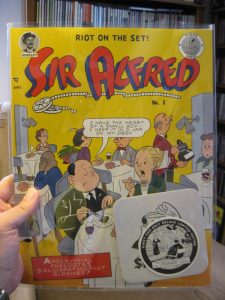
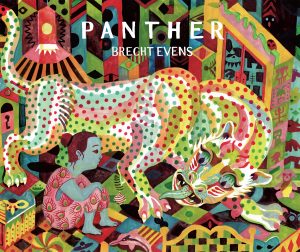
by Brecht Evens is a surreal tale of disengagement with reality. Perhaps even more relevant in 2016, as the basis of reality seems to be eroding around us with propaganda-filled news articles and outright lies spread on social media at breakneck speed. Panther is the tale of Christine, a young girl who recently lost her mother. While her father attempts to keep up a normal life for her, she is visited by Panther, an imaginary friend popping out of her drawer and telling her stories of his kingdom back in Pantherland where he’s the crown prince. The reality seems much darker than what it appears to be and Panther begins taking over Christine’s life, feeding her lies and alienating her from her friends, family, toys and her own life. Evens looks at trauma with an interesting perspective, what if the coping mechanism this child creates fails and drags her along even further down the rabbit hole. It’s a beautifully unsettling book.
Two standout works by Michael Deforge were released this year: 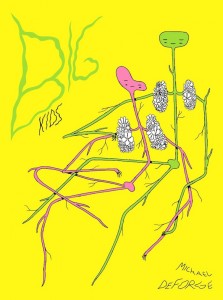
& The Prime Minister of Canada. In Big Kids, Michael Deforge explores transformative events that people go through. He posits that there is a clear distinction between those that know, those that may know and those that never will. It’s a truly engaging narrative touching on the difficulty of adolescence and on the universality of traumatic changes. The Prime Minister of Canada, available in print format via Breakdown Press or online, simply made me laugh.
The final instalment of Taiyo Matsumoto’s Sunny is a gripping conclusion to his band of orphans’ slice of life story. These books never cease to amaze me and he landed the finale with his typical bittersweetness that I’ve come to appreciate.
I’ve also written about three excellent books that are amongst the best of the year: Your Black Friend by Ben Passmore which I talked about here. Frontier #13 by Richie Pope, I already wrote a relatively personal review of this here, so I won’t go in much more detail. It’s a fabulous comic and Frontier is a great anthology deserving praise and a higher number of followers. I also wrote about Sophie Franz’s The Experts back in the summer which was a delightful sci-fi horror comic.
Webcomics of the year:
The world of web comics is large and I can’t follow everything, but three things grabbed my attention.
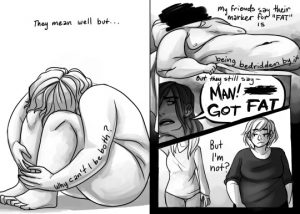
Make a Friend of Lonely by Chris Jones and Jensine Eckwall is a web comic (also available in print now) about depression and loneliness. It’s about how those are intertwined, how one brings about the other. It’s about how loneliness follows us, because we are all, in essence, alone in this world. It’s about how depression makes it difficult to connect with others; how it prevents one from engaging with others. Jensine Eckwall and Christopher M. Jones (he of the Constellation-funk) creates over 12 short pages, a very engaging tale of depression and its effect on those afflicted by it. Eckwall’s art is sparse, her characters are mostly depicted as anthropomorphic birds living in our modern world (with smartphones and dive bars and soul-crushing cubicle desk jobs). Her main character is constantly followed by a silhouette in black. Eckwall’s art is in black and white throughout. Plenty of empty space around our main character reinforces those feelings of loneliness. Very well-crafted.
Mana by Priya Huq has been really intriguing as well. Beautifully illustrated and so far a really interesting supernatural fantasy story. It’s an ongoing project of which I’m eager to see more.
Oui oui, les French-Canadian BD of the year
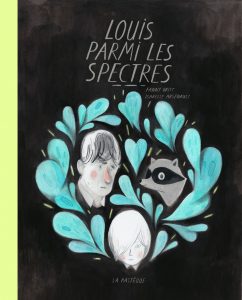
The other standout book of the year was Les coquelicots d’Irak, which is due to be published in English next year via Drawn & Quarterly. Coquelicots is the biography of the author Brigitte Findakly and her childhood in Iraq before her family moved to France. Lewis Trondheim is on art duty and brings a wonderful simplicity, almost innocence to his drawing I found charming. The colours are also done by Findakly and they’re quite nice. It’s a wonderful comic I’m happy will soon be available in English. This would actually be a great companion piece to Riad Sattouf’s The Arab of the Future. I guess I’m stretching the definition of “French-Canadian” here since Trondheim and Findakly are from France, but their book was published by Montreal’s Pow Pow Press, so I think it’s fair.
The final highlights would be the latest from Montreal based cartoonist Zviane called La Jungle. She’s done amazing work over the years. La Jungle marks her first work in colour and it doesn’t disappoint. If you don’t know her yet, her debut graphic novel Going Under (originally published in 2011) is now available in English via Pow Pow Press for the first time.
Aatmaja Pandja
Guest Contributor
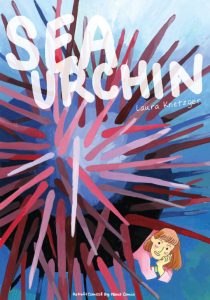


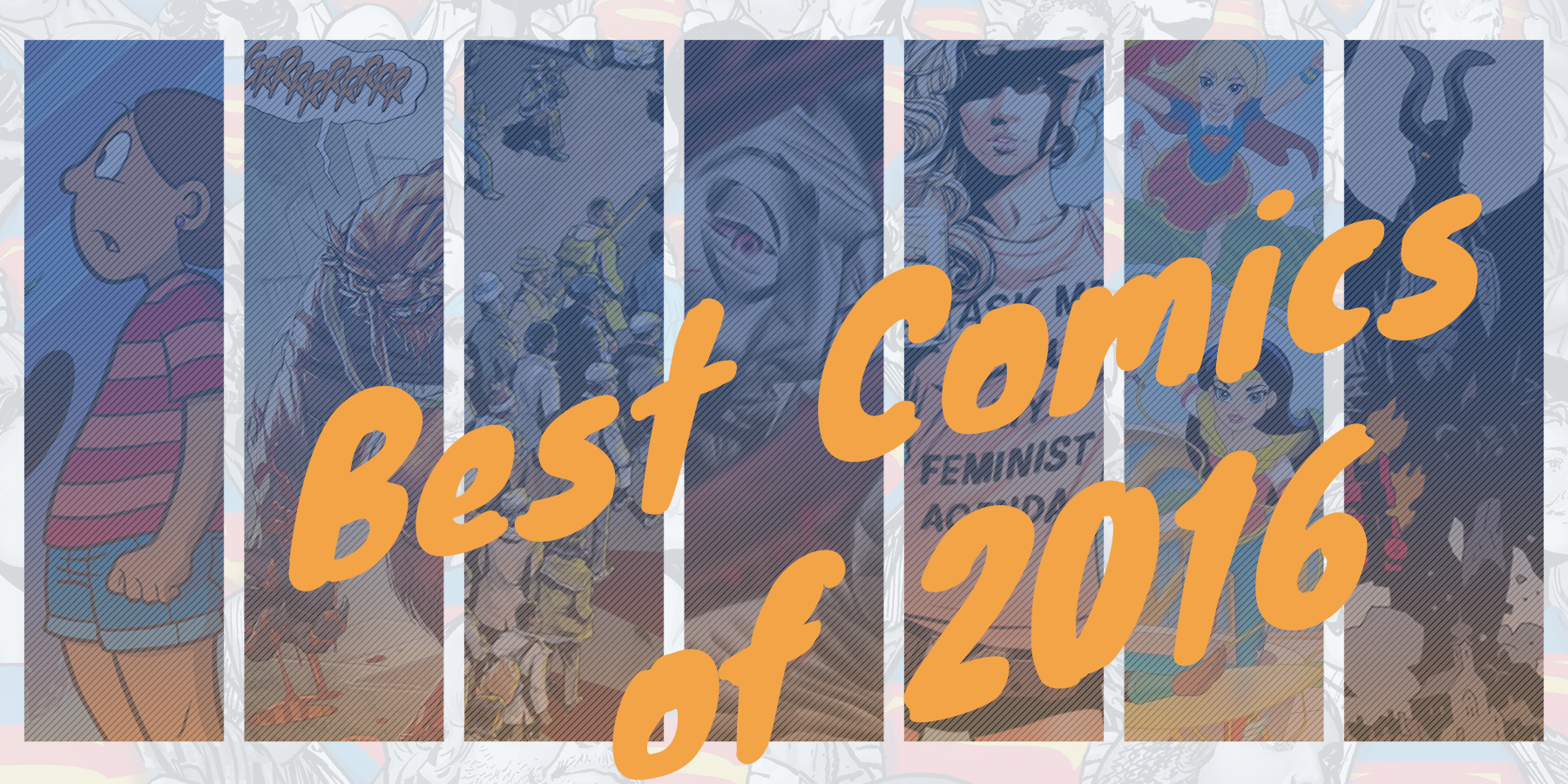

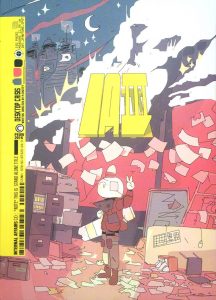
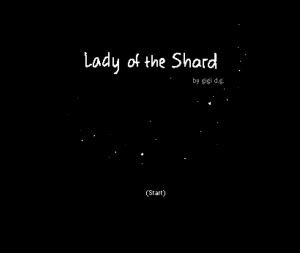
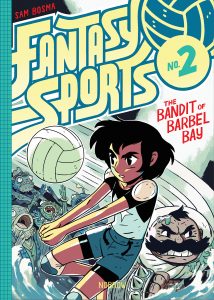
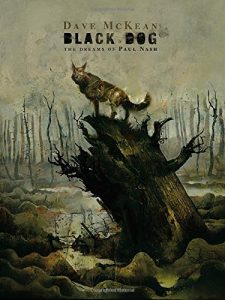
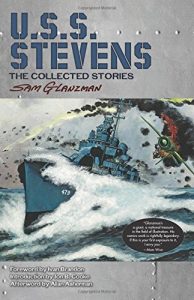
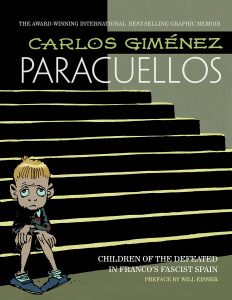
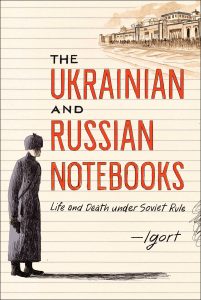
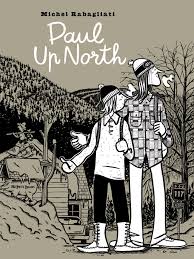
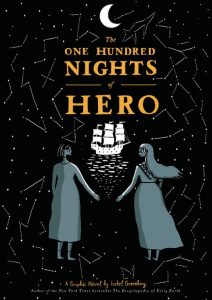
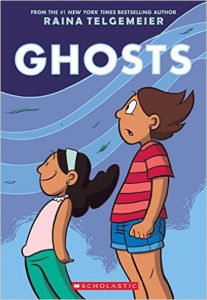
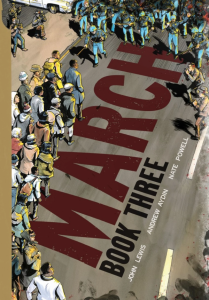
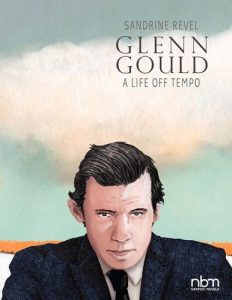
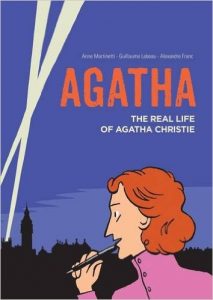
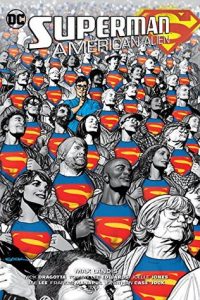
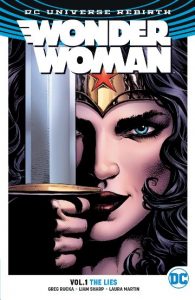
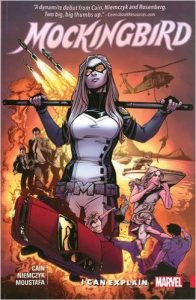
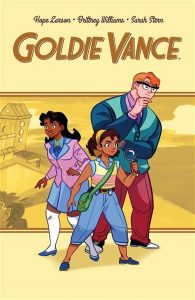
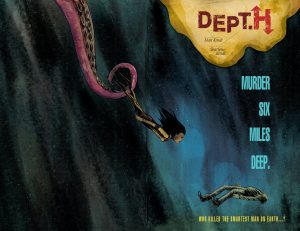
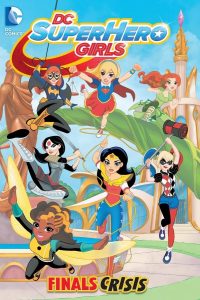
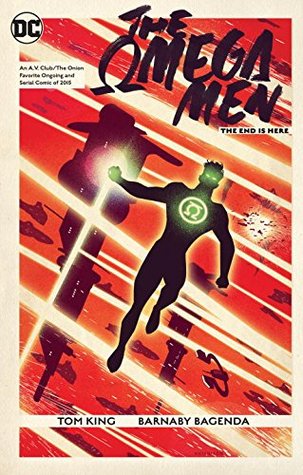
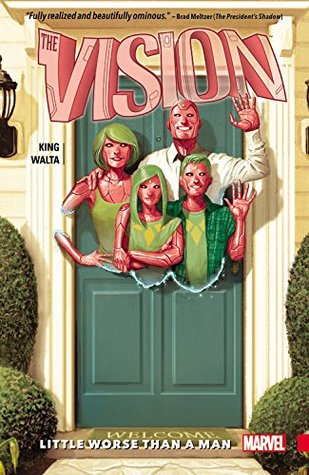
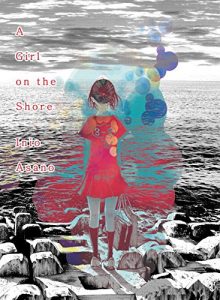
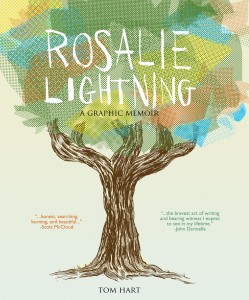
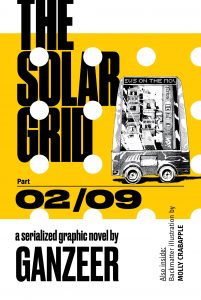
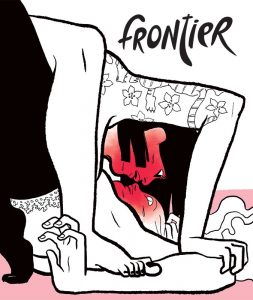
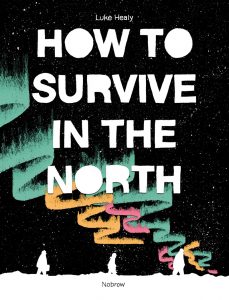
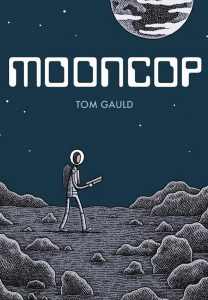
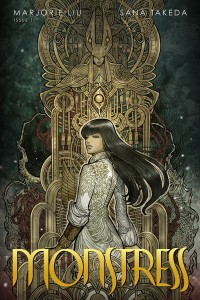
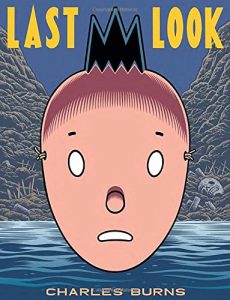
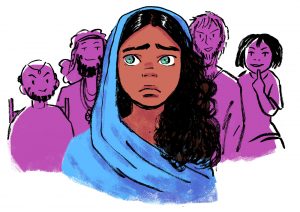
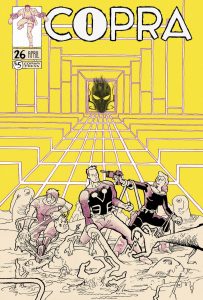
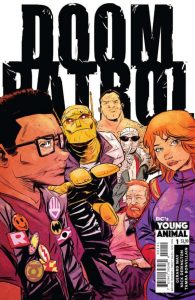
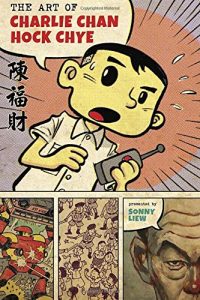
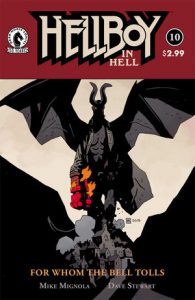
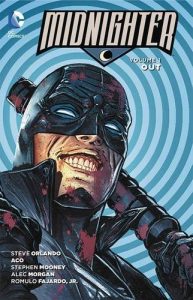
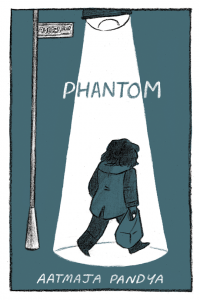
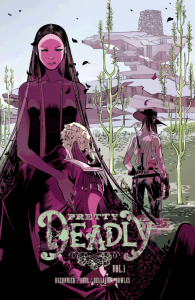





I don’t feel like I’ve read enough this year to say definitively, but of the ones I did read:
Mooncop and Patience.
Despite the loud bleatings of the liberal flock, political developments in 2016 were very encouraging – and hopefully more of the same will follow in 2017.
Trump is not a demagogue
Demagogue (n): dem·a·gogue
ˈdeməˌɡäɡ/
noun
a political leader who seeks support by appealing to popular desires and prejudices rather than by using rational argument.
We’ll see in four years…or four weeks.
Year’s best book ABOUT comics: Michael Tisserand’s George Herriman biography, “Krazy.” It’s great. Read it.
The new national anthem, after Jan. 20:
https://www.youtube.com/watch?v=29Mg6Gfh9Co
Good luck in the new year. We’ll need it.
A most interesting list of books I need to check out this year. Thanks, Beat crew! I must also second the mentions of “Mooncop” and anything by Tom King. This year I really got to discover some more non-traditional comic book stories, and I hope 2017 brings more of the same. I want to give a special shout out to “The Cloud” graphic novel by K.I. Zachopoulos and Vincenzo Balzano. The story is a dream like fantasy story that takes a bit of imagining to understand, but it was the most beautifully illustrated book I read this year.
Comments are closed.